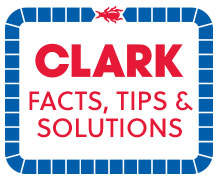Preparing Your Facility for Winter: Exterior Facility Modification
Nov 2, 2016, 13:34 PM
by
Clark Pest Control Livermore Office

What can food processing facilities do to make the exterior areas of their facility less hospitable to pests? Traditional thinking would encourage setting more traps and bait stations but in the Food Safety Modernization Act-era implementing preventive controls to deny pests access is the preferred method.
The commercial pest management experts at Clark Pest Control offer the following checklist to reduce pest pressure on the exterior of commercial facilities:
- Properly store equipment. Most pests will take harborage about anywhere they can find shelter. If you keep equipment, crates and pallets, etc. unprotected outdoors, you not only attract pests seeking shelter, but you risk the chance of bringing those pests into the plant when the equipment is brought inside.
- Remove litter and waste. Piles of litter can provide shelter in which pests can easily hide, while waste is a readily accessible source of food. With such available resources, pests are also likely to decide your property is a great place to set up shop.
- Cut weeds or grass. Both weeds and grass can provide shelter for a vast range of pests. Additionally, keeping a two-foot band around the perimeter of the facility completely free of grass, plants, or organic material will create a non-attracting buffer zone. Even standard landscaping ground cover, such as mulch and bark, can provide food and shelter for pests, and increase their access into the facility.
- Control moisture. Moisture is one of the greatest of pest attractants – whether it be puddling in low-lying areas, overwatering of plants or mulch, stopped-up drain pipes, or other leaks. To prevent these, areas that accumulate water should be filled in or regularly drained; grounds built up so as to slope away from the building; downspouts directed away from the facility; and stone, rock, or other non-absorbent materials used for landscaping.
- Use protective coverings, harborage elimination, and regular inspection to protect food in outdoor vessels. Protect any food products that are stored outdoors (i.e., crates of produce, grain, etc.) to prevent contamination especially from bird droppings.
- Reduce pest attraction to lights. Some lighting is more attractive to pests and can draw them toward your building and to doors near which they are placed. This can be reduced by:
- Replacing standard mercury vapor lights with high-pressure sodium vapor or halogen lights. Bulbs with pink, yellow, or orange tints will be least attractive to the flying insects.
- Placing lights away from the building and directing the light toward the area needing illumination.
- Shading windows so that indoor lighting is less, or not, visible from outside.
- Control outdoor eating areas. If employees are able to eat outdoors, designate specific areas where they can do so, and restrict food consumption to those areas. Ensure that all food is picked up afterward, and spills or dropped food cleaned up immediately. Employees should also be told to not feed birds or other wildlife, as this simply attracts them, and secondary pests, to the area.
Keep trash dumpsters closed, and trash areas clean and as far from the building as possible. It hardly needs to be said that trash and its odors will attract all sorts of pests – from flies to cockroaches to wild animals. Even when the containers can be set away from the building, employees should be cautioned to place trash only inside trash containers, and all should have pest-resistant lids/covers that are kept closed.
If you are looking for a commercial pest management company that will deliver exceptional results, provide outstanding customer care, and protect your employees and customers from unwanted and potentially harmful pests, Clark Pest Control can help!